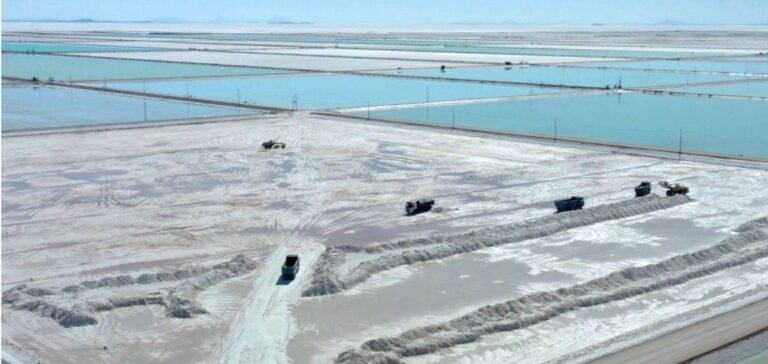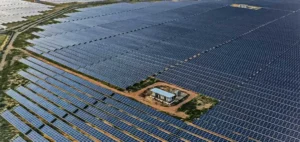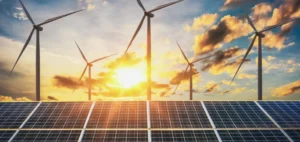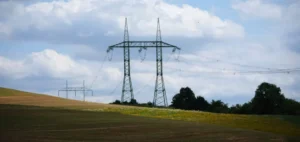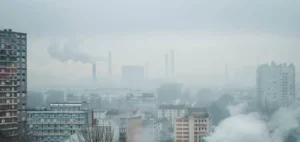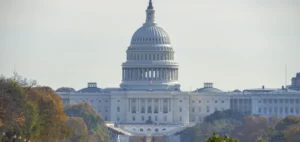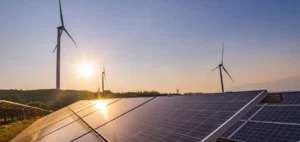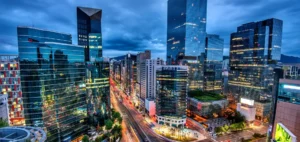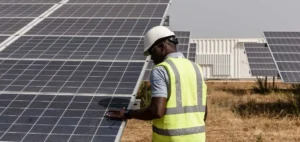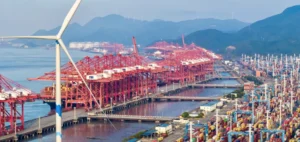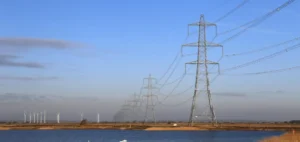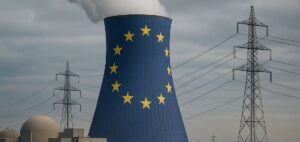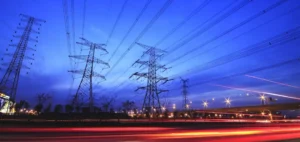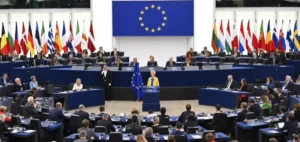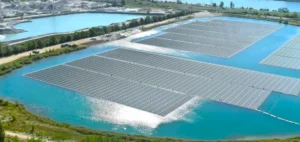Between turquoise blue and bright white, the open-air pools of South America’s lithium mines contrast with the surrounding arid landscape. On the borders of Chile, Argentina and Bolivia, the extraction of the precious metal crystallizes hopes and disillusions.
This arid region of the American continent contains 56% of the 89 million tons of lithium identified in the world, according to a 2022 report by the United States Geological Survey (USGS).
Nicknamed the “oil of the 21st century”, this white metal is essential for the manufacture of batteries for electric cars, which are supposed to save the planet from global warming, but also for cell phones and other electronic devices.
Its price has risen from $5,700 per ton in November 2020 to $60,500 last September, according to Benchmark Mineral Intelligence.
– Atacama Desert –
In Chile, lithium comes exclusively from the Atacama Desert, a brown, rocky plain in the north of the country. It will account for 26% of global production in 2021, according to the USGS.
Two companies, the American Albemarle and the Chilean SQM have operating licenses, but in return they must pay up to 40% of their revenues to the State.
In the first half of the year alone, Chile’s tax revenues from lithium exceeded those from copper, a metal of which the country is the world’s leading producer.
Faced with such a windfall, the left-wing president Gabriel Boric has promised to create a public lithium company, without excluding possible private participation.
But lithium mining is not without environmental consequences, and although mining companies are obliged to pay substantial compensation to local communities, the latter fear for their livelihoods in a region regularly hit by drought.
– “We want to know” –
The Chilean company SQM says it will draw nearly 400,000 liters of water per hour for the needs of its plant in 2022.
An inspection at its site in 2013 had revealed that a third of the carob trees, a hardy tree because of its deep roots, had died, due to lack of water, a study later revealed.
“We want to know exactly what the real impact of pumping water from the water tables is,” says Claudia Pérez, a resident of the San Pedro Valley, very close to the site, saying that she is not “against” lithium, but hopes that “the negative effects” of its exploitation for the local population will be “minimized”.
On the other side of the Andes Mountains, in Argentina, a road winds between the salt deserts of the Jujuy province. Together with the neighboring provinces of Salta and Catamarca, the region is the second largest lithium deposit in the world.
With few restrictions on its exploitation and taxes of only 3%, Argentina is the fourth largest producer of lithium in the world.
Currently, two mines are operating in the area. One, Livent, is in the hands of the United States, while the other, Orocobre, is managed by an Australian-Japanese consortium with the participation of an Argentine public company.
– Dozens of projects –
In addition, there are dozens of projects at various stages of maturation with the participation of local companies, but also American, Chinese, French and South Korean.
Argentina could overtake Chilean production by 2030, estimates a 2021 report by the Chilean Copper Commission (Cochilco), a state-owned organization.
The governor of Jujuy province, Gerardo Morales, even invited Tesla boss Elon Musk to invest in the region via Twitter in April when Musk complained about the high price of lithium. But local communities are also reluctant.
In Salinas Grandes, a salt desert north of Salta, a sign alerts the traveler: “No to lithium, yes to water and life”. “It is not, as they say, that they are going to save the planet. Rather, it is we who must give our lives to save it,” says Veronica Chavez, president of the indigenous community Kolla Santuario de Tres Pozos, not far from Salinas Grandes.
“We don’t eat lithium or batteries. We drink water”, she assures, questioned by the AFP in front of enormous heaps of salt collected by a local cooperative.
A few meters away, Barbara Quipildor, 47 years old, prepares +empanadas+ in a small construction made of salt. “I want them to leave us alone, in peace. I don’t want the lithium (…), what concerns me is the future of my children’s children,” she said.
– Lithium Hotel –
About 300 km north of Jujuy, the “salar” of Uyuni, in Bolivia, is the largest in the world. It contains a quarter of the world’s lithium resources, according to the USGS.
With an area similar to that of Qatar, this salt desert is located in a region where more than half of the population is poor.
Also eager to benefit from the manna of the coveted metal, the former left-wing president Evo Morales (2006-2019) nationalized hydrocarbons and lithium at the beginning of his mandate.
“Bolivia will set the price for the whole world,” he said in 2018, calling on the rest of the region to follow his lead. In Rio Grande, his words brought hope. This small village with muddy streets is the closest to the factory of Yacimientos de Litio Bolivianos (YLB), the public company created by Evo Morales.
Full of optimism, Donny Ali built a hotel there that he called Lithium… But the fortune was not there.
“We were hoping for great industrial and technological development and, above all, better living conditions. This has not happened,” laments the 34-year-old lawyer, sitting on a couch in his empty office.
Unlike Chile, Bolivia -but also Argentina- is struggling to fully exploit lithium due to “unfavorable investment” and “more difficult geographical conditions,” according to a 2021 report by the Center for Strategic and International Studies (CSIS).
Some people think that Bolivia will “miss the lithium train. I don’t think so,” says Juan Carlos Zuleta, an economist who briefly managed the YLB plant in 2020.
Despite their differences, the countries of the “lithium triangle”, led by Argentina, are considering the manufacture of Li-ion batteries on site after the exploitation of lithium.
“All technologies have their advantages and disadvantages. What is important is that there is a balance that benefits not only the country but also the local populations,” said Roberto Salvarezza, one of the directors of the Argentine group YPF, which plans to launch a pilot plant for the manufacture of lithium batteries in December.
“South America has all the raw materials necessary for the production of batteries and electric vehicles,” Zuleta assures. Meanwhile, the Lithium Hotel remains desperately empty.

